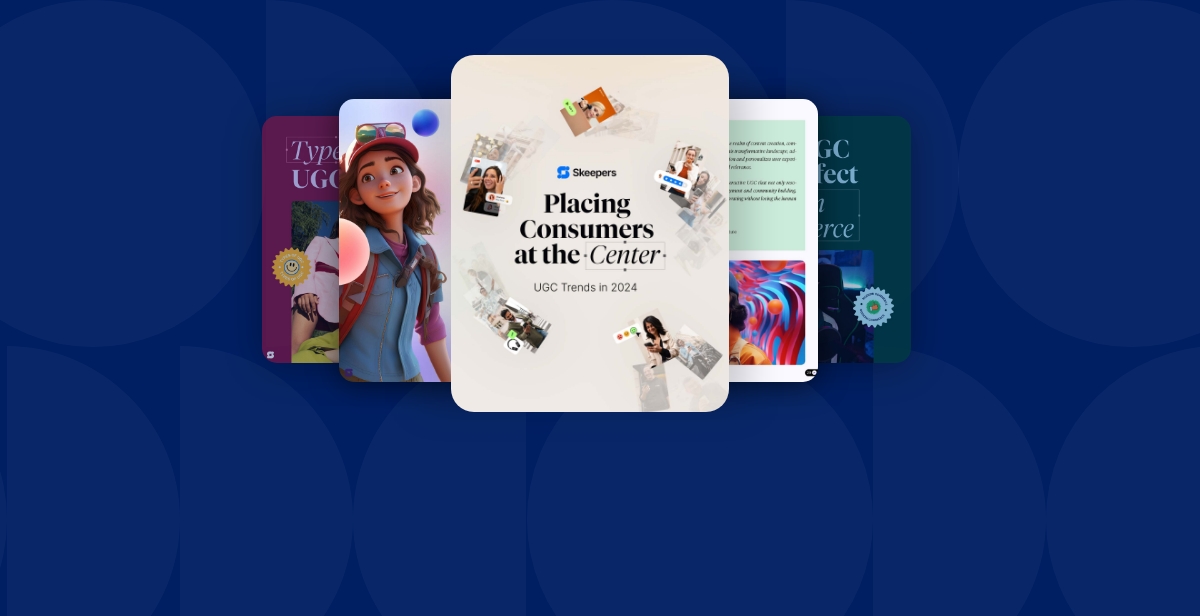By 2022, the influencer marketing industry will be worth $15 billion. But as partnerships between brands and influencers multiply, it becomes urgent to distinguish yourself from the competition. Co-creation with an influencer is a good answer to this problem. Indeed, deep collaborations between companies and content creators capture consumers’ attention and effectively convert them into...
By 2022, the influencer marketing industry will be worth $15 billion. But as partnerships between brands and influencers multiply, it becomes urgent to distinguish yourself from the competition. Co-creation with an influencer is a good answer to this problem. Indeed, deep collaborations between companies and content creators capture consumers’ attention and effectively convert them into customers. Hivency explains why and shares best practices.
What is co-creation in influencer marketing?
In influencer marketing, co-creation is primarily a close collaboration between a brand and a content creator to create a product or a capsule collection. Considered in a wide way, co-creation can also be used to design packaging, a communication campaign, a strategy for social networks, or an event.
Why co-create with an influencer?
There are many (good) reasons to rely on co-creation:
Maximize the effects of your influencer marketing campaigns
Co-creation maximizes the results of influencer campaigns. Indeed, brands that work hand in hand with content creators benefit from increased visibility. Influencers involved in this type of operation demonstrate a strong commitment. The co-creation experience also serves as a breeding ground for real storytelling. It only requires to be documented and generates numerous and engaging publications. Finally, co-creation amplifies the prescription power of opinion leaders. Fully integrated into the creative process and informed of the smallest details of the project, they play their role of trusted third party between the brand and their followers.
Innovate and cultivate the uniqueness of your brand
Influencers are creative and authentic personalities. By collaborating with them deeply, brands ensure they have fresh and personal ideas. As true trend spotters, they know how to come up with innovative proposals likely to please and surprise their audience.
Boost and secure sales
Content creators know more than anyone else about the expectations of their community. They are therefore well-positioned to create products that will seduce their subscribers. Even better, they are addressing fans who adhere to their personality, style, and ideas. Already conquered, this audience is naturally inclined to buy their productions. Finally, “social media influencers” can involve their followers in the creation process (by organizing polls on their social networks for example). This will generate engagement, create a product-market fit and, finally, boost and secure sales.
Turn influencers into brand ambassadors
In 2021, advertisers are building lasting and authentic partnerships with content creators. More “real” in the eyes of consumers, this type of collaboration has many benefits for companies. Co-creation is a great way to turn an influencer into a brand ambassador. This approach brings the brand closer to the opinion leader and feeds a mutual trust. The relationship is less transactional, more constructive, and more horizontal. The content creator is not seen as a simple communication medium. They get to know the brand on a personal level, discover its working methods, and establish a special relationship with the company’s teams. This type of partnership is rewarding for content creators. More than that, it reinforces their credibility and is a source of inspiration for new content. For all these reasons, co-creation projects seduce influencers and contribute to converting them into brand ambassadors.
Best practices to co-create with an influencer
The steps to follow to co-create a product, a collection or a campaign with an influencer obviously depend on your core business. However, a few good practices must always be observed:
Choose the right influencer
In terms of co-creation as elsewhere, it is important to choose the right influencer to collaborate with. The latter must share the company’s values and be followed by an audience representative of its target. Matching tools, such as Hivency, allow you to find influencers that match your brand’s identity and your personas. Ideally, you should develop a pre-existing relationship and rely on real ambassadors.
Deepen the collaboration as much as possible
In order not to miss your effect, beware of fake co-creations. A credible collaboration goes far beyond simply adding a label to a product. Well aware of marketing practices, consumers are not fooled by purely cosmetic operations. They want to see the “touch” of their “idol” in the final result and have access to the creative process transparently. The involvement of the influencer must therefore be as strong as possible.
Involve subscribers in the co-creation project
Influencers are the bridge between companies and their followers. They know their followers’ desires and exchange with them on a daily basis. Therefore, within the framework of a co-creation project, content creators can solicit their community in order to obtain their answers to specific questions. The tools integrated into social networks allow them to easily carry out votes and polls. This way, consumers can, for example, choose the future features of a product. Brand-influencer-consumer co-creation generates engagement and leads to the emergence of an offer perfectly adapted to the market. This path deserves to be explored.
Focus on micro-influencers and nano-influencers
The recent period has seen the rise of increasingly confidential content creators. Nano and micro-influencers are now the favorites of brands. These assiduous social users are the intermediaries of choice. Thanks to them, advertisers can reach specific niches. Authentic and close to their subscribers, they have a strong prescription power and generate very good engagement rates. Moreover, this category of influencers has all the characteristics of a lead user. Small content creators are indeed true consumers, except that they have higher than average demands, anticipate trends, and actively seek solutions to their problems. Logically, in 2021, advertisers are moving up a gear with nano- and micro-influencers. From now on, brands will invite them to create custom products for their community, to take part in brainstorming sessions, to reinvent packaging, or to imagine their future influence campaigns. In short, brands are partnering with these leading users to innovate in contact with consumers.
Some examples of co-creations with influencers
Co-creation with influencers is booming. It is now an integral part of the marketing strategy of the biggest brands and is progressively gaining ground in more confidential sectors.
Co-creation, a well-established strategy in the consumer fashion and beauty sector
Many major fashion and beauty brands are creating co-creations and capsule collections with influencers. As an example, the influencer @taylorlashae has co-created a watch collection with the brand @bredastudio. Meanwhile, the Swedish DNVB (for “digital native vertical brand”) Na-kd regularly collaborates with renowned content creators such as French content creators Romy, Danaë Bessin, Paola Locatelli or Chloé B.
Revolve and Aimee Song : A stylish and refined collaboration
Aimee Song, an American influencer with 5.7 million followers, has created a clothing brand in collaboration with Revolve, an e-commerce platform in fashion.
The clothing brand named Song of style, the name of the blog of the young celebrity is colorful and inspired by successful series such as Sex & The City or Dynasty will be marketed on the platform Revolve, ranging from size XXS to size XXL.
The designer explains that she made this co-creation primarily for her loyal community, her first inspiration attentive trends.
This collaboration has made the bet of a powerful marketing strategy, constantly renewing itself according to the desires and desires of the influencer and her followers.
Iznowgood and Cam&Line: an exemplary co-creation
The collaboration between the ethical blogger “Iznowgood” (named Céline) and the very young responsible and ethical fashion brand Cam & Line seems to us to be the archetype of a successful co-creation strategy. The brand and the micro-influencer worked together to imagine an ethical and responsible dress, reflecting their common values. The content creator’s subscribers take part in the design process. The blogger solicits them via Instagram to get their opinion about the characteristics of the dress to produce. In accordance with their respective commitments, the content creator and the brand are transparent. What to inspire confidence in consumers.
In a detailed French blog post, the influencer goes into detail about the genesis of the project, its purpose and its development. She also lifts the veil on a number of practical aspects. From the manufacturing process to the characteristics of the dress, including pricing, everything is explained to potential customers in a true empowerment perspective. All the ingredients for a successful co-creation are gathered here.







